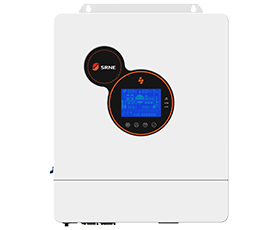Solar inverter parameters:How much do you know
Solar inverter is one of the most vital components of a solar power system. It is a device that converts direct current (DC) from the solar panels into alternating current (AC) which is used by domestic and commercial appliances. Starting out as just boxes converting DC into AC, today, solar inverters have evolved to become much more smart and intelligent units.
Since a solar inverter plays an important role in the solar power system, its performance should be considered in the selection process of users. There are many parameters and technical conditions for describing the performance of the inverter. Here is only a brief description of the technical parameters commonly used in evaluating the inverter.
Rated Output Power
The rated output power indicates the ability of the solar inverter to supply power to the load. Solar inverters with high rated output power can carry more electrical loads. When choosing a solar inverter, you should first consider having sufficient rated power to meet the electrical power requirements of the device under maximum load, as well as system expansion and access to some temporary loads. When the electrical equipment is based on a purely resistive load, the rated output power of the solar inverter is generally selected to be 10% to 15% greater than the total power of the electrical equipment.
Overload Capacity
The overload capacity of solar inverter, under the specified conditions, the inverter output exceeds the rated current value in a short time. The overload capacity of the inverter should meet certain requirements under the specified load power factor. Load power factor, which characterizes the inverter's ability to carry inductive or capacitive loads. Under sine wave conditions, the load power factor is 0.7 to 0.9 (hysteresis) and the nominal value is 0.9.
Maximum Harmonic Content
The output voltage and current waveform of solar inverter with distortion phenomenon, it is easy to affect the power consumption of its equipment performance if this value is too large. In the selection process of solar inverter, the smaller the value, the better. But the current inverter technology is difficult to avoid this problem, so choose according to the safety regulation value.
Output Voltage
The accepted voltage level for most countries is 240V. The inverter output voltage should comply to the standard voltage level and has to be within 228V to 252V. For U.S, the accepted voltage level is 110V. The inverter output voltage needs to be within 98 V to 122V. The output voltage should be in the range as mentioned above in order for it to be grid or appliance compatible.
Overall Efficiency
The overall efficiency represents the size of the solar inverter’s own power loss. Large-capacity solar inverters must also give efficiency values under full-load operation and low-load operation. In general, the efficiency of 10KW level should be above 90%; the efficiency of larger power must be above 95%. The efficiency of the inverter has an important impact on the solar power generation system to increase the effective power generation and reduce the cost of power generation. Therefore, the selection of solar inverters should be compared as much as possible, and the products with higher overall efficiency should be selected.
Starting Performance
Starting performance, which characterize the inverter's ability to start with load and performance during dynamic operation. The inverter should be guaranteed to start reliably under rated load.
If you know more about the above solar inverter parameters, you may easily and precisely find out the most suitable solar inverter for your home or business.



































































































